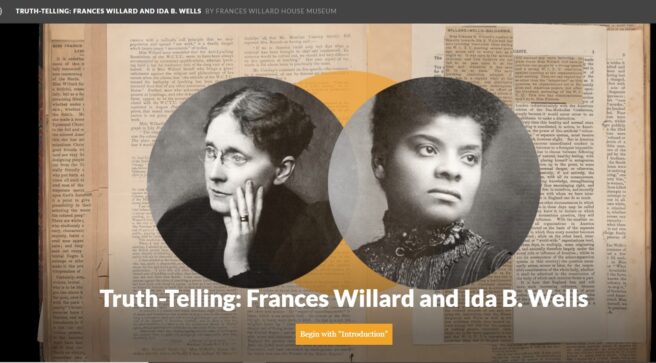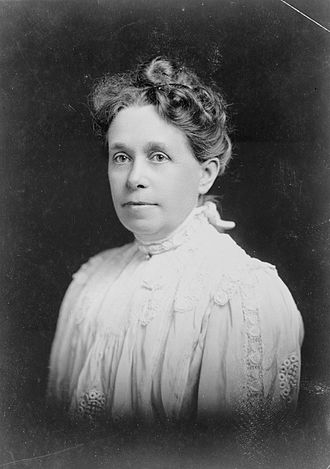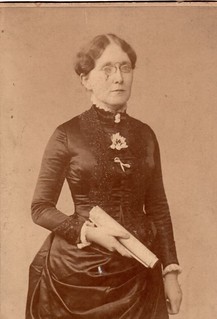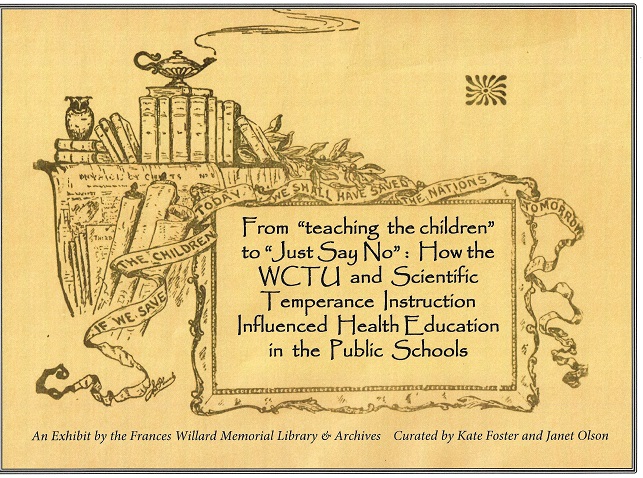We have created a number of digital exhibits to help interpret the histories connected to our historic site. These exhibits cover a variety of topics, including Frances Willard, the WCTU, women’s history, race, activism, and temperance.
Truth-Telling: Frances Willard and Ida B. Wells

This is award-winning community history project explores the conflict between Frances Willard and activist and investigative journalist Ida B. Wells. Embracing a digital exhibit featuring original archival sources, community conversations, and public programs, the project’s goal is to uncover the full truth of the conflict and to explore its meanings and ramifications for our world today.
The Digitized Journals of Frances Willard

Willard kept journals continuously from the age of 16 to 31, and then from age 54 to 57 – 50 volumes in all. The original journals are fragile, and Willard’s handwriting is very difficult to decipher. This online resource provides fully searchable access to Willard’s complete, transcribed journals.
NEW Anna Gordon and the International Reach of the WCTU

While prohibition is often depicted in United States history as a uniquely American experience, the temperance movement was international in scope. This Story Map explores the cross-cultural interactions initiated by the National and World’s Woman’s Christian Temperance Union (WCTU) through the lens of WCTU President Anna Gordon’s 1921 trip through South America. By spreading awareness of the danger of alcohol and advocating for the rights of women and children, WCTU leaders hoped to create a more peaceful world. However, reaching across national divides revealed some weaknesses behind their argument for temperance, including economics and colonialism.
NEW Women and Education: The Lifelong Learning of Frances Willard

This timeline explores Frances Willard’s work in all spheres of education – both her own and that of other women. Willard was raised to appreciate the power of knowledge and first applied that principle to academic teaching. After she left institutional education, she taught in equal measure through disseminating knowledge in writings and speeches during her time as president of the WCTU.
Local Sources: WCTU Drinking Fountains

This exhibit documents a WCTU legacy that is hidden in plain sight: the hundreds of drinking fountains installed by local Unions in towns and cities across the country from the 1880s to the 1930s. One of the WCTU’s long-standing goals was to supply fresh drinking water as an alternative to the offerings of saloons. Fountains also fulfilled another WCTU mission: animal welfare, as many fountains included troughs for horses and dogs as well as spouts for humans. Placed in public areas such as parks and major intersections, these fountains – classic or rustic, bronze, stone, or brick – symbolized the WCTU’s local influence. This exhibit documents over 90 fountains, some that are still in place and others that have been moved or removed. Fountains are organized alphabetically by state or country and town/city name. More will be added as they are discovered.
Frances Willard’s Tours through the South, 1881-1882

This StoryMap uses archival sources—scrapbooks, newspaper clippings, and correspondence—to follow Frances Willard on her 1881 and 1882 travels through the southern United States. She visited 14 states and territories, organizing WCTU unions and giving 100 speeches. Willard’s southern trip—and especially her relationship with key white Southern women—influenced her understanding of race, providing background to issues that would come to a head during her conflict with Ida B. Wells in the mid-1890s.

Performing Temperance is a digital book history exhibit that uses primary sources to explore the ways in which temperance advocates used oratory, recitation, and drama to disseminate their reform agenda, educate children, and train temperance workers – especially women – to speak in public.
“Womanly Liberty” or “Home Protection”: Frances Willard and Woman Suffrage

Frances Willard’s conviction that women should vote engaged her throughout her life. She taught reluctant followers in the WCTU to see voting as a duty; meanwhile, she took a leadership role in national women’s suffrage organizations which stressed women’s right to vote. This exhibit uses materials from the WCTU Archives to illustrate the development of Willard’s thought on women’s duties and rights–and how the WCTU joined the fight for the vote.
From “Teaching the Children” to “Just Say No”:
How the WCTU and Scientific Temperance Instruction Influenced Health Education in the Public Schools

With Scientific Temperance Instruction (STI), the WCTU introduced a new phase into its temperance work–adding alcohol education into public school curricula. This exhibit features a small sampling of the materials in the Willard Memorial Library and WCTU Archives that tell the story of STI, the WCTU women who spearheaded the movement, and its continuing influence on health education.
Frances E. Willard: A Biographical Timeline (Beta version)

The timeline incorporates images and documents to illustrate stages in Willard’s life from her childhood to her growing career as an orator, a writer, a leader of women, and a suffragist. Images offer a visual component to the dates and events. Unless otherwise noted, all images come from the Frances Willard House Museum and WCTU Archives. The timeline is based on dates listed in “Let Something Good Be Said: The Speeches of Frances E. Willard” (Carolyn DeSwarte Gifford and Amy R. Slagell, eds., University of Illinois Press, 2007), although some additional dates have been added, and Gifford and Slagell are not responsible for any errors. The timeline was created by Karis Blaker, Loyola University of Chicago, using TimelineJS. A provisional bibliography is available here, and will be expanded later in the final version of the project.
Influences of a Self-Made Woman: The Early Journals of Frances Willard

Influences of a Self-Made Woman looks at the journals of Frances Willard’s early life in order to better understand her early influences: people, places, and ideas, that fostered her devotion to the woman’s suffrage movement, social activism, and political work. Willard’s journals are available to view online.
